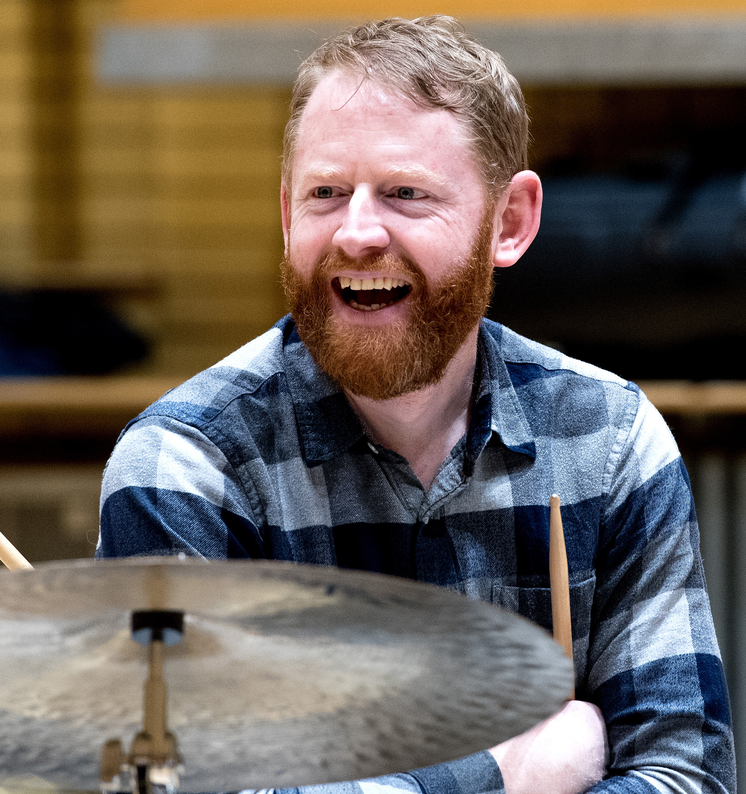(no)boundaries Analysis
Here follows a grounded theory analysis of this project in five stages: immersion, categorisation, phenomenological reduction, triangulation, and interpretation. In an effort to better understand how the music unfolded, I chronologically captured the musical events in each set and separated those into sections as I heard them after the fact. As this project was to be released commercially on vinyl (c17 minutes each side), the musical analysis focuses on the digital edit of the first Birmingham performance, but the macro analysis takes all performances into account. With no pre-conceived materials provided, the arc of the music was created by the group in real time.
Due to the unconventional music created, I had to create a language to describe it. Part descriptive, part-metaphorical, part-musical, using terms such as: solemn, languid, like a swarm of wasps, clickey, evil, wet, deep, slimy, dark etc, proved useful in defining these difficult to place textures. As David Borgo explains in Sync or Swarm (2006):
(…) a growing body of scholarship in cognitive studies argues for the notion that the way we think and learn is deeply ensconced in metaphor; new understandings develop by connecting with and extending previous knowledge and experience (Borgo, 2006: 12)
I concur that metaphor was useful in helping define a language for improvisation that regular musical description struggled to. As a group, we created sections that were ‘other-worldly’ and, consciously or not, we were trying to articulate a landscape together that made sense out of this confusion and contrast. [1]
Form Creation
Where familiar repertoire and/or familiar forms can be useful in building group momentum and defining solo shapes, we were without that luxury here. There was no obvious place to define one section from the next; there were multiple possibilities. In choosing this release to be limited-edition vinyl, I had to deal with this problem head on. Due to the vast dynamics in our performances (directly related to the amount of music we could fit on to one side of vinyl), we were looking at c16 minutes on each side. Improvising sets that naturally lasted between 40 and 65 minutes, the editing of these became an artistic dilemma. And, although we used silence individually, there were no moments of sustained group silence long enough to provide a natural edit. It seemed apparent that maintaining a continuum of sound was an essential element to our collective improvising, with each instrument taking it in turns to maintain the momentum. That being said, there were sections with greater inertia and then contrasting sections that were more contemplative in their function. Evident after the fact, these pivotal moments served to give pause to that momentum as we searched for the next soundscape to explore.
Even though we were not performing from written scores, much of our detail was created in performance, a practice very familiar to us as jazz musicians where:
(…) the improviser’s knowledge includes not only differing ways of rendering pieces but differing ways of thinking about and conceptualising them. These are central issues for jazz musicians, who, despite their varying use of arrangements, often perform without written scores, creating much of the detail of their music in performance (Berliner, 1994: 92)
Although our sets were not made up of pre-determined contrasting compositions, we appeared to conceptualise each set of free improvisation as both a narrative within of itself and one that made sense in the arc of all four performances. Beyond this, player reflections voiced a desire to actively avoid replication; preferring to find new textures and challenge what came before. We were looking to creatively inspire each other into unexplored territories. The detail alluded to in the above quote (Berliner, 1994), corresponds to our development of, and transitioning between, blocks of sound (or sound complexes) as a group and the real-time unfolding of these blocks into a sequential arc. With no pre-composed music, we were form-creating in the moment.
In my research to date, the importance of non-verbal musical interaction and aural instruction in live improvised performance has been a primary line of enquiry. Furthermore, the measuring of any empathic interaction (an approach to group attunement where the viewpoint of the other is most important), has been key to understanding the dynamics involved in each performance and led to distinctions as follows (all under the umbrella of Empathic Interaction):
1. Empathic Attunement (an empathic alignment with other group members)
2. Empathic Creativity (empathic attunement with creative risk-taking and spontaneous musical utterances)
3. Empathic Speculation (a pro-active approach to empathic interaction that attempts to adapt the behaviour of another beyond their perceived boundaries)
Catalogued by events as they unfolded chronologically, the following analysis is mindful of these modes of empathic interaction and have marked them accordingly.
